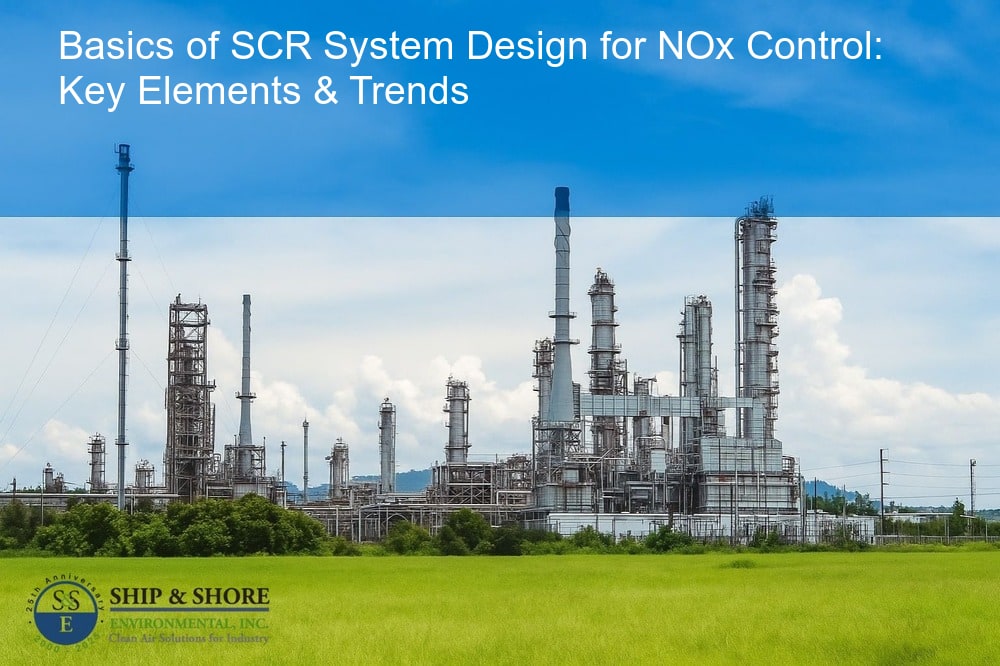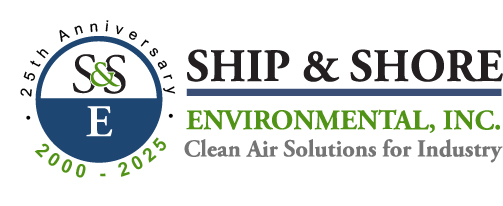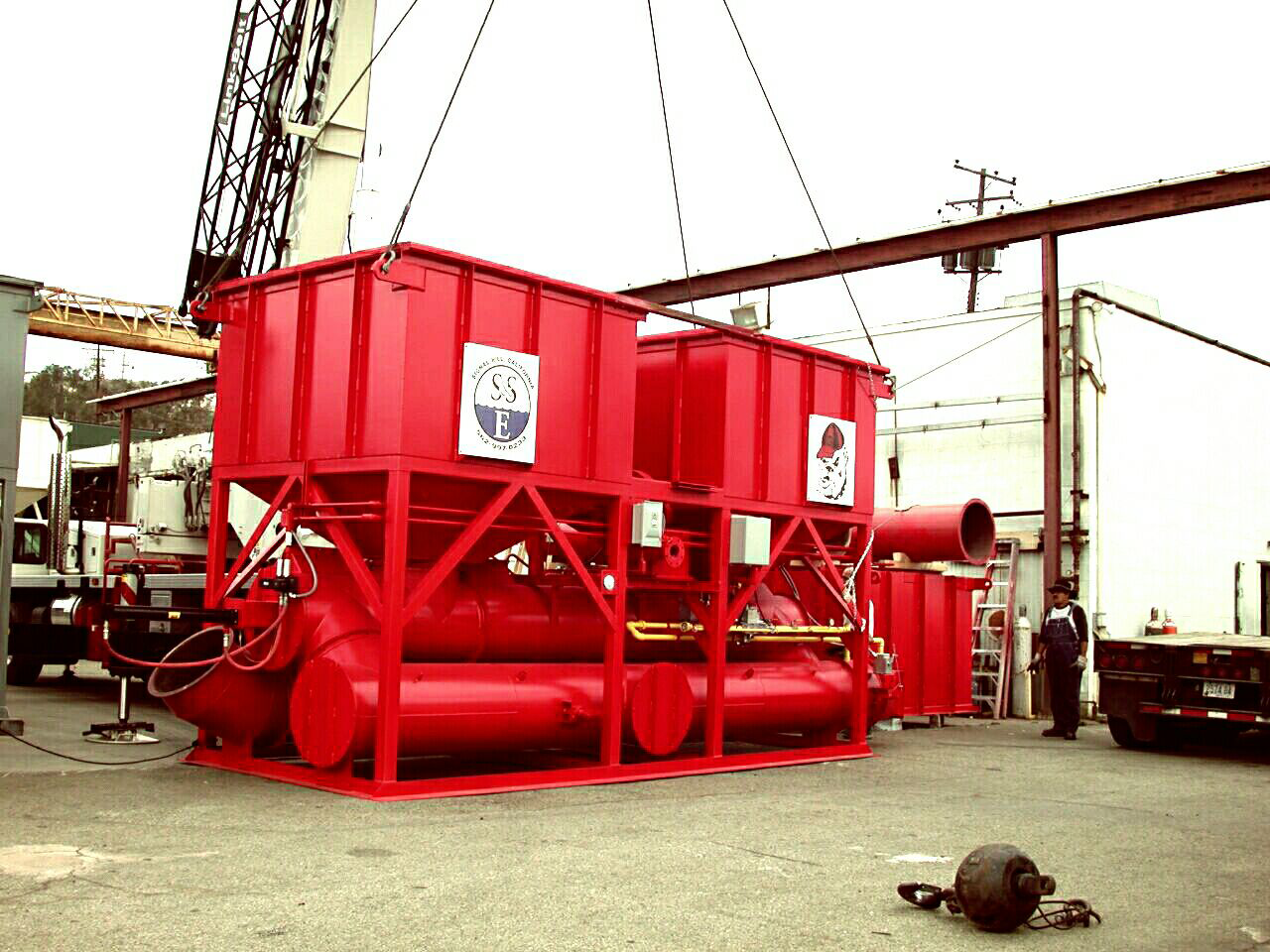
Mastering the Basics of SCR System Design for NOx Control
September 15, 2025 8:29 amImportance of Controlling Nitrogen Oxides in the Industrial Sector
Nitrogen oxides (NOx) are prominent pollutants emitted by various industrial processes, posing significant health and environmental risks. These pollutants contribute to the formation of smog and acid rain, as well as respiratory problems and other health issues. Given the strict regulatory landscape, industries are increasingly pressured to implement effective technologies to mitigate NOx emissions. One of the most effective solutions is the Selective Catalytic Reduction (SCR) system. The basics of SCR system design for NOx control are essential for ensuring both regulatory compliance and environmental sustainability.
Role of Selective Catalytic Reduction Systems in NOx Control
SCR systems play a crucial role in the reduction of NOx emissions by converting these harmful gases into water (H2O) and nitrogen (N2), both of which are harmless. This is achieved through a chemical reaction facilitated by a catalyst and an injected reductant, typically ammonia or urea. The effectiveness of this method has made SCR systems a cornerstone in the industrial sector’s efforts to combat NOx emissions. By employing SCR systems, industries can achieve significant reductions in NOx output, often exceeding 90%, thereby meeting stringent regulatory standards and contributing to a healthier environment.
Understanding the Basics of SCR System Design for NOx Control
The design of an SCR system is paramount to its effectiveness in controlling NOx emissions. At Ship & Shore Environmental, Inc., we recognize that understanding the basics of SCR system design for NOx control is fundamental for any industry looking to improve its environmental impact. Key components of SCR systems include the reactor, catalyst, reductant delivery system, and control mechanisms. The reactor housing must be designed to ensure optimal contact between the flue gas and the catalyst, while the catalyst’s type and structure are critical for facilitating the reduction reactions. Additionally, the reductant delivery system must ensure precise and consistent injection of ammonia or urea, and control mechanisms are required to maintain the system’s efficiency and reliability under varying operational conditions.
Factors such as flue gas temperature, flow rate, and chemical composition all influence the design and operation of an SCR system. Effective design requires a thorough understanding of these variables to configure a system that meets specific industrial requirements while maximizing NOx reduction. At Ship & Shore Environmental, Inc., we prioritize a holistic approach that includes detailed assessments and customized solutions, ensuring that our clients achieve optimal performance from their SCR systems.
Elements and Working Mechanism of SCR Systems for NOx Control
Selective Catalytic Reduction (SCR) systems are widely recognized for their effectiveness in controlling nitrogen oxides (NOx) emissions in the industrial sector. To understand the basics of SCR system design for NOx control, we must first identify the key elements and their working mechanisms. An SCR system typically consists of a catalyst, a reducing agent (usually ammonia or urea), and an injection system that distributes the reducing agent.
When NOx-laden flue gas passes through the SCR reactor, the reducing agent is injected into the gas stream. This mixture then contacts the catalyst, where a series of reactions occur to convert NOx into harmless nitrogen and water vapor. Transition metals like vanadium, tungsten, or titanium often compose the catalyst, providing the necessary environment for these chemical reactions.
Key Factors to Consider in Designing Effective SCR Systems
An effective SCR system design hinges on multiple factors that ensure optimal performance and regulatory compliance. Here are some critical factors:
- Temperature: The flue gas temperature must be within the optimal range for the catalyst to function efficiently. Most SCR systems operate best at temperatures between 300°C and 400°C.
- Ammonia Slip: It’s crucial to minimize ammonia slip – the excess ammonia that exits the SCR reactor without reacting with NOx. Efficient designs incorporate feedback control systems to adjust ammonia injection rates dynamically.
- Space Velocity: This is the ratio of gas flow rate to the catalyst volume. A lower space velocity allows more time for the reaction, enhancing NOx reduction but requires a larger reactor.
- Catalyst Volume and Composition: The type and amount of catalyst used significantly impact the efficiency of NOx reduction. Engineers must choose the catalyst based on the specific requirements of their industrial processes.
Additionally, periodic maintenance and catalyst replacement are essential to sustain long-term performance. Effective monitoring systems help detect any drop in efficiency, prompting timely interventions.
Case Study: Successful Implementation of SCR System Design for NOx Control
Let’s consider a case study that illustrates the successful implementation of SCR system design for NOx control. In a large-scale chemical manufacturing plant, we encountered the challenge of reducing NOx emissions to meet stringent environmental regulations.
Initially, we performed a detailed flue gas analysis to determine the NOx concentrations and other relevant parameters. This data guided the design of a customized SCR system that included specific catalysts tailored to the plant’s operational conditions. We also implemented a dynamic ammonia injection system to minimize ammonia slip.
Upon installation, the SCR system underwent a rigorous performance evaluation. It was found that NOx emissions were reduced by over 90%, successfully bringing the plant into compliance with local and federal regulations. The plant not only met regulatory requirements but also experienced various operational benefits, including improved efficiency and reduced environmental impact.
Implementing the basics of SCR system design for NOx control was pivotal in achieving these outcomes. This case underscores the importance of thorough planning, customization, and monitoring in SCR system design.
Did you know? Selective Catalytic Reduction (SCR) systems use ammonia to convert nitrogen oxides, potent pollutants, into harmless nitrogen and water vapor, thus significantly reducing industrial emissions.
The Impact of Efficient SCR System Design on Environmental Compliance
The importance of controlling nitrogen oxides (NOx) in the industrial sector cannot be overstated, given its substantial impact on air quality and public health. An efficient Selective Catalytic Reduction (SCR) system design is paramount in achieving rigorous environmental compliance. Implementing such systems aligns directly with regulatory standards and demonstrates a commitment to sustainable and responsible operations.
Future Trends and Enhancements in SCR System Design for NOx Control
As technology continues to evolve, so do the methods for optimizing the Basics of SCR system design for NOx control. Innovations in catalyst materials, automation, and system integration are paving the way for more efficient and cost-effective solutions. Future enhancements may include smarter monitoring systems, predictive maintenance algorithms, and integration with broader environmental management systems. These advancements will not only meet but exceed current regulatory requirements, ensuring long-term compliance and operational efficiency.
Importance of Continual Learning and Innovation in Basics of SCR System Design for NOx Control
In the rapidly changing industrial landscape, continual learning and innovation remain critical. Ship & Shore Environmental, Inc.’s commitment to understanding and applying the Basics of SCR system design for NOx control ensures that we remain at the forefront of environmental technology. By investing in ongoing research and development, and through extensive case studies, we provide our clients with solutions that are both innovative and effective. Staying informed about regulatory changes, technological advancements, and industry best practices enables us to offer systems that are not only compliant but also forward-thinking.
FAQ
What is an SCR system, and how does it control NOx emissions?
An SCR, or Selective Catalytic Reduction system, is a technology primarily used for reducing nitrogen oxides (NOx) emissions in industrial applications. It operates by injecting a reducing agent, such as ammonia or urea, into the exhaust stream, which then reacts with the NOx over a catalyst, converting it into harmless nitrogen and water vapor. Therefore, it significantly reduces the emission of pollutants contributing to smog and acid rain.
What factors are essential in designing an effective SCR system?
In crafting an effective SCR system, several key factors must be considered. This includes selecting an appropriate catalyst, accurate dosing of the reducing agent, adequate reaction temperature, and a well-designed exhaust layout to ensure optimal mixing. Additionally, controls must be in place to monitor the system’s performance and handle variations in operating conditions.
Can you provide an example of a successful SCR system implementation?
One of our case studies highlights a client in the manufacturing sector who faced stringent NOx emissions regulations. By partnering with us, an SCR system was custom-designed and integrated with their existing process. The result was a significant reduction in NOx levels, surpassing compliance targets and enhancing the facility’s environmental performance. For more details, please refer to our in-depth case studies on our website.
How do future trends in SCR system design influence environmental compliance?
Future trends in SCR system design, such as improved catalyst materials and advanced monitoring technology, aim to enhance both the efficacy and efficiency of NOx control. These innovations contribute to more robust compliance with evolving environmental regulations. Furthermore, they are predictive of a trend towards integrated systems that not only comply with present standards but also eschew inefficiencies, resulting in streamlined operations and lower emissions overall.
Why is it important to stay updated on SCR system design and NOx control?
Staying current with the latest advancements and regulatory requirements in SCR system design and NOx control is crucial for industry professionals. As regulations become increasingly stringent, and technology evolves, being equipped with the latest knowledge ensures that environmental compliance is achieved. Additionally, it allows us to innovate and optimize our SCR solutions, ensuring that our clients are equipped with state-of-the-art, cost-effective, and environmentally responsible technologies.
Categorised in: Blog

